Although gorgeous, invasive shrubs expand into other natural areas outside their borders. They spread easily and completely take over with time. As they spread, they displace native plants. Before long, the plant affects the entire ecosystem around it.
What makes a plant invasive depends on the location, however. Some exotic plants are deemed invasive by the state parklands or forests near you. Any species of plant that competes with native varieties and rapidly takes over is invasive.
Many are challenging to eradicate. Sometimes the plants spread quickly due to the wildlife, while others simply grow fast. You might still see invasive species sold at your local garden nursery. Gardeners may even recommend invasive plants.
That said, it’s crucial to understand which aggressive growing plants will overtake your property and compete with natural flora. Watchlists help gardeners know which plants may act aggressively in their environment.
Use our list of invasive shrubs to understand which plants to avoid. Many of these plants are attractive, and some may even come with other benefits, but the shrubs will only cause future problems. We’ll show you which species to look out for before you spend a penny.
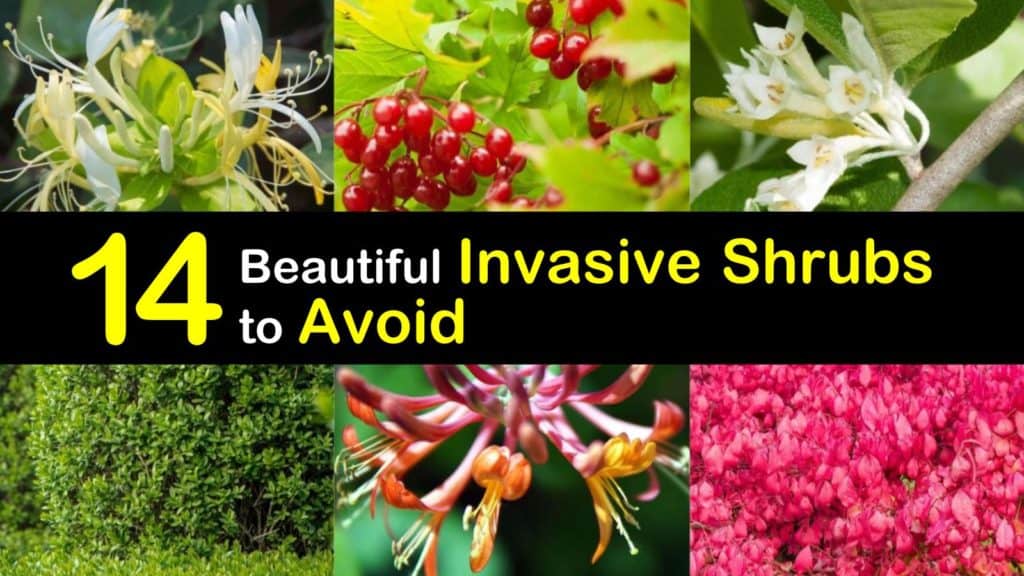
- How to Buy Non-Invasive Shrubs
- Amur Honeysuckle (Lonicera maackii)
- Bush Honeysuckle (Lonicera tatarica) – Overtakes Nearby Plants
- Autumn Olive (Elaeagnus umbellata)
- Multiflora Rose (Rosa multiflora) – Flowers Invade Quickly
- Japanese Barberry (Berberis thunbergii)
- European Cranberry Bush (Viburnum opulus) – Produces Tons of Seeds
- Burning Bush (Euonymus alatus)
- Himalayan Blackberry (Rubus armeniacus) – Invades Nearby Growth
- European Privet (Ligustrum vulgare)
- Japanese Spiraea (Spiraea japonica) – Endangers Native Species
- Buckthorn (Rhamnus cathartica)
- Glossy Buckthorn (Frangula alnus) – Grows Understory Fast
- Butterfly Bush (Buddleia davidii)
- Japanese Knotweed (Fallopia japonica) – Spreads Quickly
How to Buy Non-Invasive Shrubs
If you’ve ever had to deal with getting rid of invasive nutgrass or crabgrass, you know the trouble they cause in your yard. Invasive shrubs and other plants do the same thing.
Sometimes, attractive standard shrub options masquerade as beneficial additions to your garden. The plants called invasive shrubs might show fast-growing, quick-spreading, or maintenance-free on their garden tag. Invasive types invade your yard and the other natural species common in your area.
There are also aggressive plants that won’t take over the garden entirely as with invasive plants. Aggressive species are tougher to care for, though. They might require tons of pruning to keep them from growing too quickly.
Whether they’re invasive or aggressive, both types cause severe issues to native plant communities. Many aggressive and invasive species become a headache to deal with later. They become much more challenging to care for than other options.
Many of these invaders might show up in your local garden center without your knowledge. Sometimes well-meaning nursery employees even suggest quick-growing plants. Check for a list of the invasive shrubs in your location through your town or city.
Knowing which plants may become problematic in time gives you a chance to choose wisely. However, not all fast-growing or easy maintenance shrubs cause trouble. Each plant offers different characteristics and growth habits.
Some invasive species multiply and take over the planting area. Others bear tons of fruit, which wildlife then helps spread. Always purchase plants native to your area. If you’re planting in the United States, for example, choose native species.
The native shrubs in your area are the plants less likely to become invasive, so stick with planting the options commonly found in North America and your USDA planting zone.

Globalization has made it easy to grow plants from other parts of the world. Many of the invasive shrubs on this list originate from Asia.
They were later transported to areas like Europe before moving into North America. Watch out for any invasive species by sticking to the plants native to your area.
Amur Honeysuckle (Lonicera maackii)
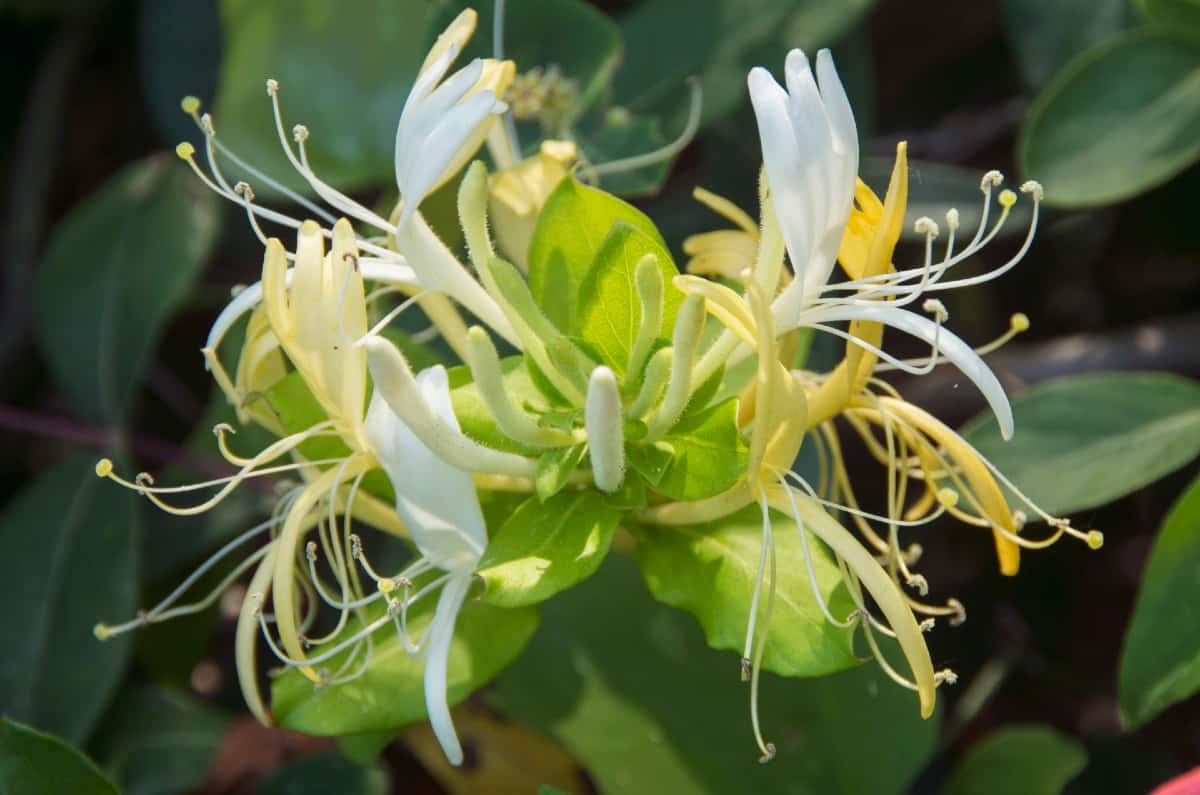
Although Amur honeysuckle is also called the common name Bush honeysuckle, the two invasive shrubs are close relatives. Amur honeysuckle grows between ten and fifteen-feet-tall in full sun to part shade.
It has attractive flowers and red fruit, but the bush takes over the garden and crowds out the other plants. If you already have an Amur honeysuckle in your yard, try to dig up the shrub or cut the branches clear to the ground each year.
Heavy pruning and chemical control come highly recommended with Amur honeysuckle, especially in a large population.
Bush Honeysuckle (Lonicera tatarica) – Overtakes Nearby Plants
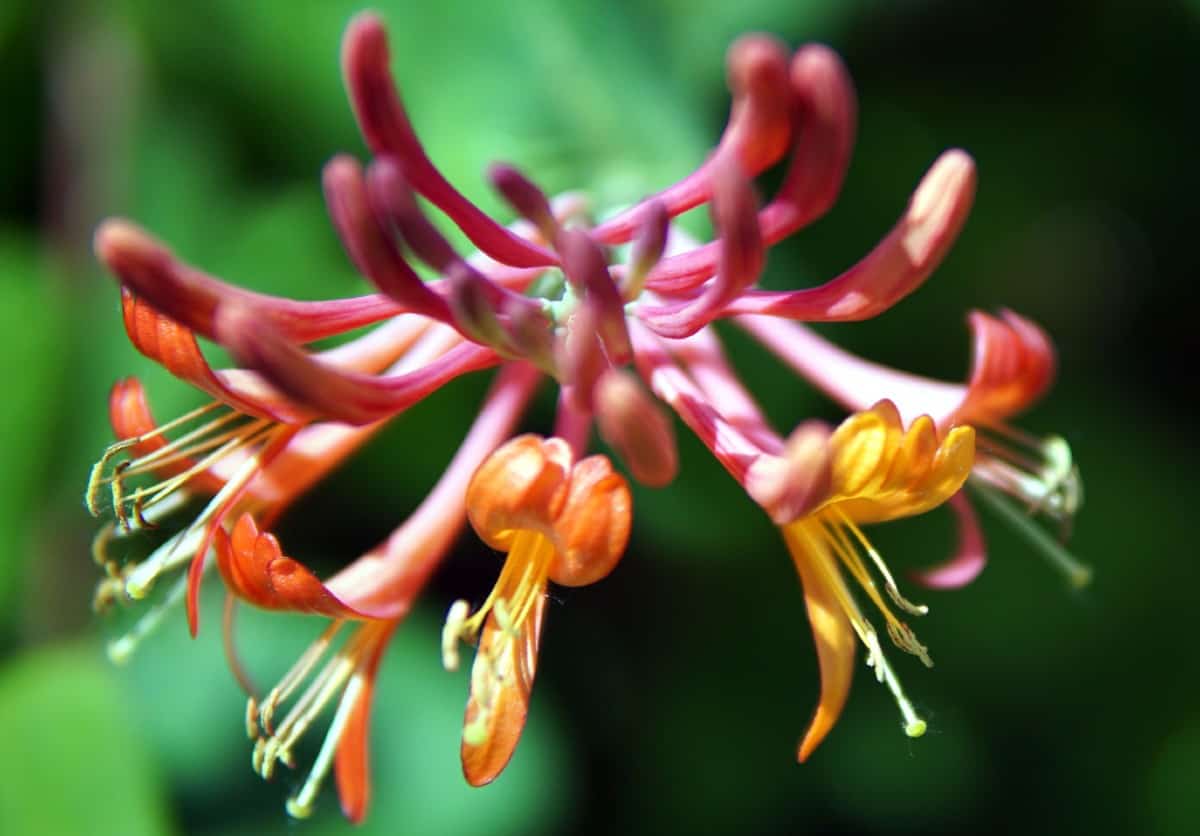
Sometimes called Tartarian honeysuckle, bush honeysuckle comes from the same family as the Amur bush. Both plants grow in USDA planting zones three to eight and grow native to Asia.
This shrub grows up to 12-feet-tall in part shade to full sun, unlike other types of honeysuckle. Bush honeysuckle is famous for the white or pink flowers, and the nectar in the blooms attracts hummingbirds. However, bush honeysuckle proliferates. It overtakes plants nearby in no time.
Autumn Olive (Elaeagnus umbellata)
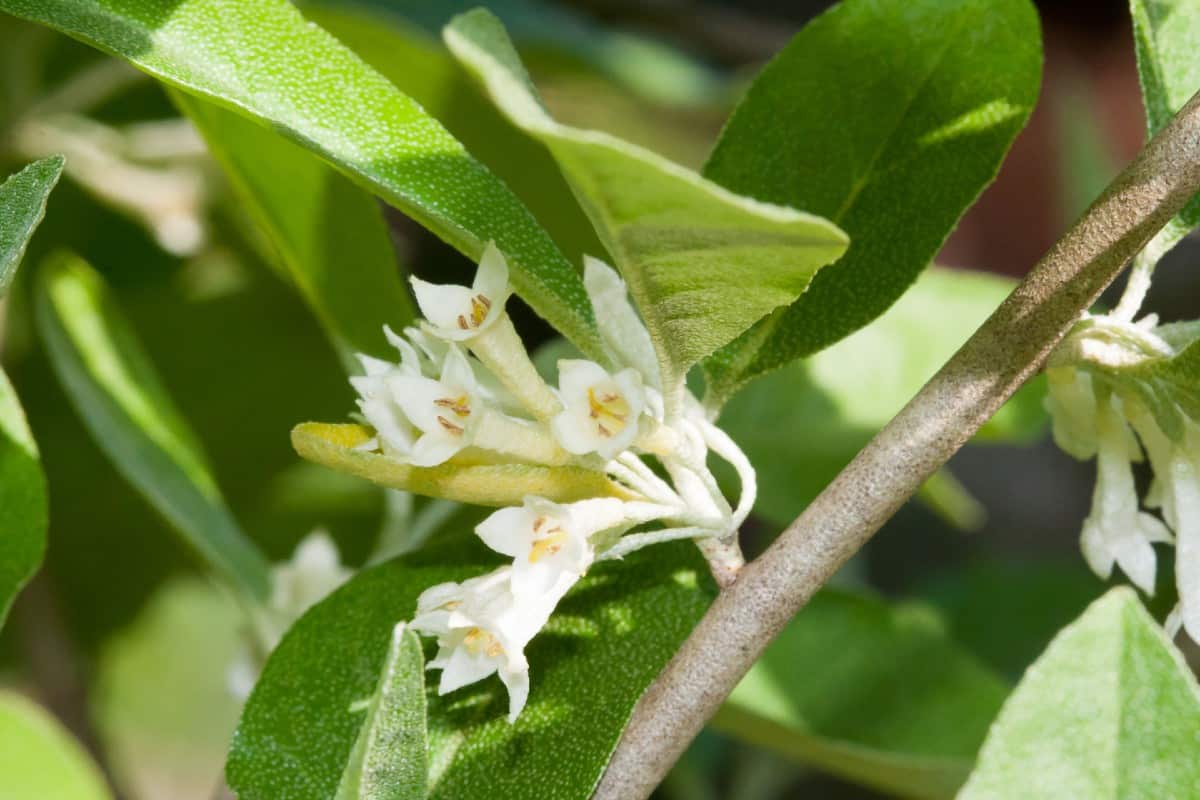
Autumn olive is native to East Asia, where the shrub grows between ten and 20-feet-tall. All this hardy plant needs to spread quickly in part shade to full sun location.
As with its sibling the Russian olive, the autumn olive survives in areas where most other plants fail. Any type of unfavorable soil is excellent for this plant. However, the growth quickly becomes a nuisance, and the bush is difficult to remove due to the sharp thorns.
The Autumn olive also threatens ecosystems because it competes and displaces native plants. The dense shade around the bush interferes with growth around it as well as nutrients cycling in the soil. Plus, the shrub produces over 200,000 seeds every season.
Multiflora Rose (Rosa multiflora) – Flowers Invade Quickly
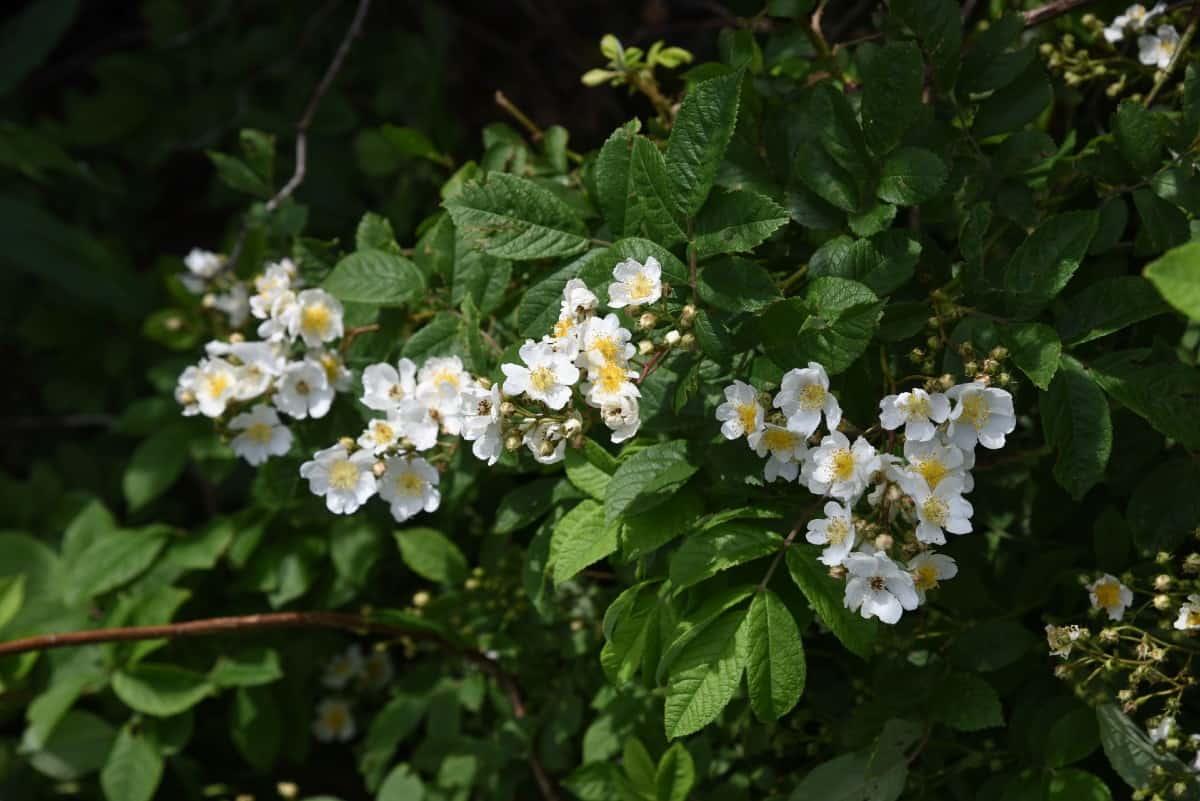
The multiflora rose is an attractive shrub from East Asia. These invasive flowers grow up to 15-feet-tall, and the stems take root and immediately widen when the rose touches the soil.
The plant spreads quickly, taking over an entire garden. Sometimes multiflora rose forms a vine to reach even further.
Look for this plant in USDA zones five to eight. You may see multiflora rose called by the common names baby rose, Japanese rose, seven-sisters rose, many-flowered rose, bushel rose, or the wreath rose.
Japanese Barberry (Berberis thunbergii)
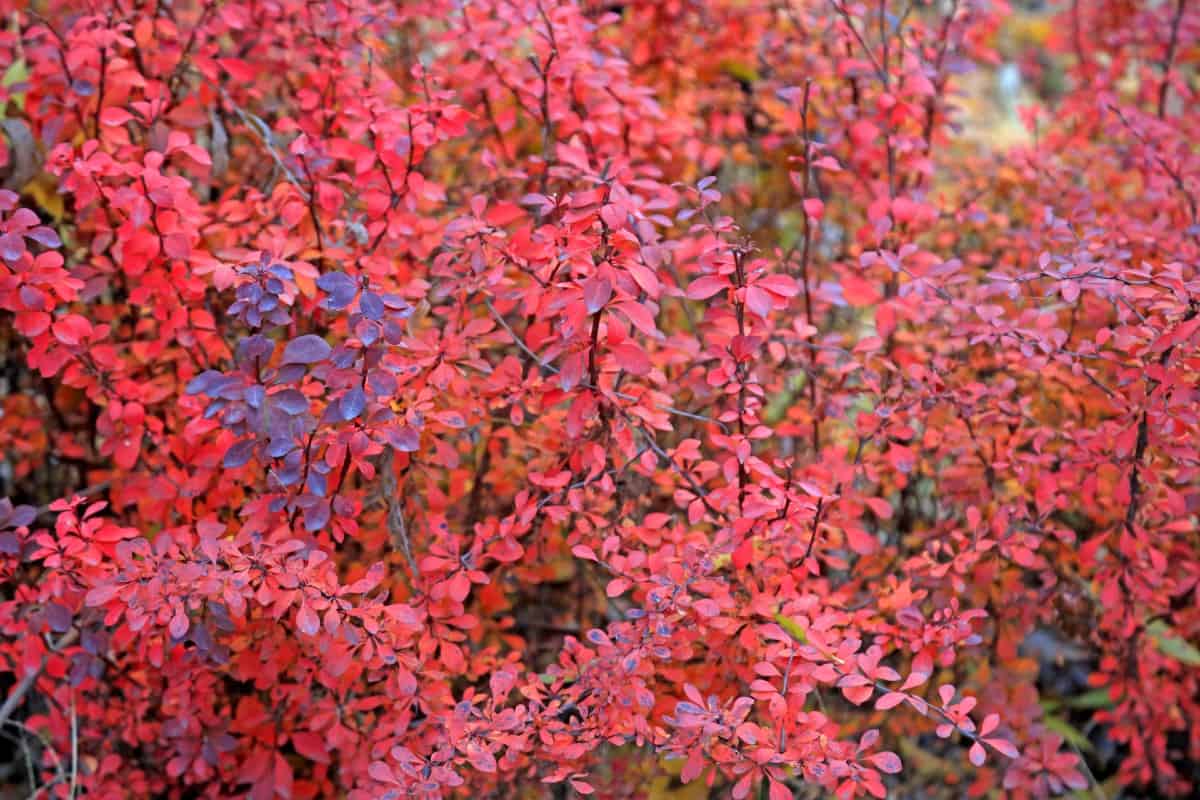
Homeowners often choose colorful low maintenance shrubs like Japanese barberry because they are deer resistant, which is rare in plants. It is common in tons of landscapes, from USDA zones four to eight.
All Japanese barberries are native to Eastern Asia and are considered invasive. They grow to between two and eight feet in either part shade or full sun.
Some types offer purple leaves, and many others contain thorns. Other common names for the Japanese barberry include Thunberg’s barberry and red barberry.
European Cranberry Bush (Viburnum opulus) – Produces Tons of Seeds
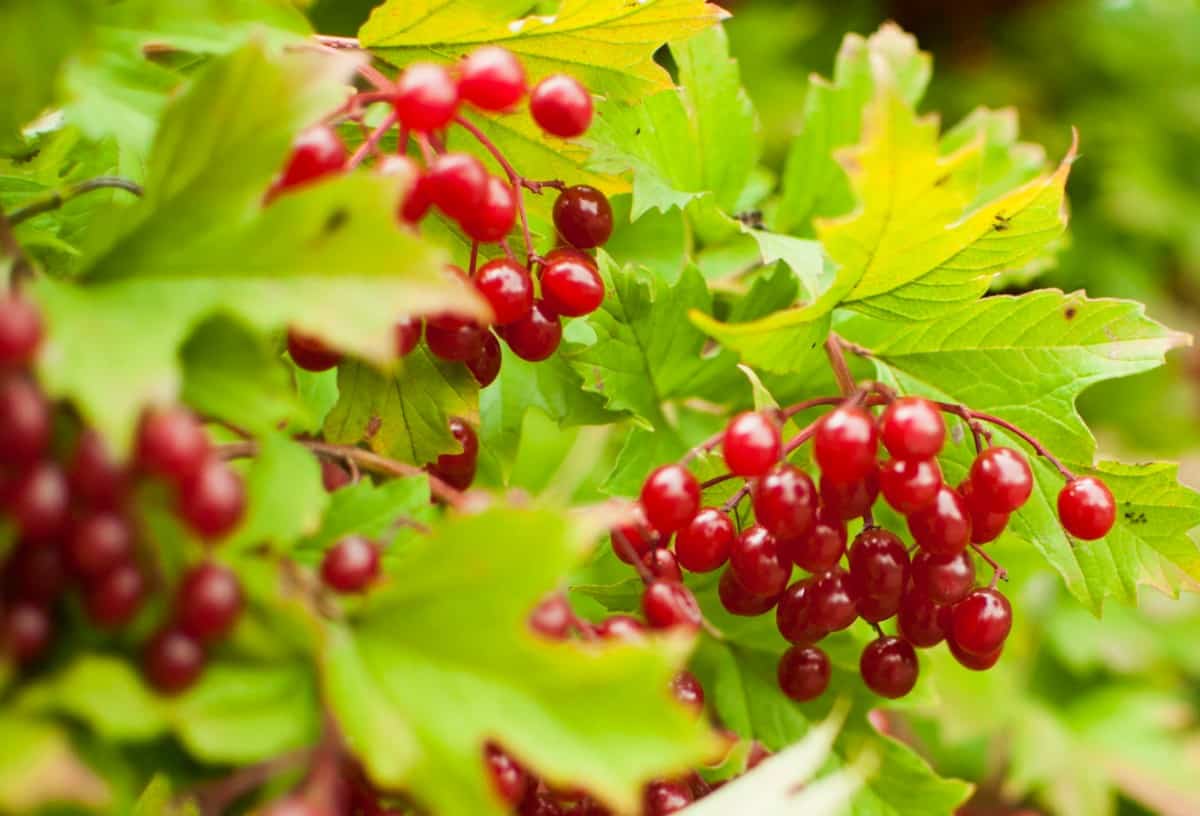
Growing cranberries for consumption is different than growing this plant. The European cranberry bush is another type of honeysuckle shrub native to Asia and Europe. Like other species of viburnum shrubbery, the bush proliferates in part shade to full sun. It thrives in USDA planting zones three to eight.
Unlike other honeysuckle shrubs, the cranberry bush offers fruit from which the plant gains its name. They resemble several varieties of cranberries.
The birds who eat the fruit then spread the seeds, contributing to the spread of the shrub. Other common names of the shrub include snowball bush or snowball tree due to the clusters of tiny white flowers.
Burning Bush (Euonymus alatus)
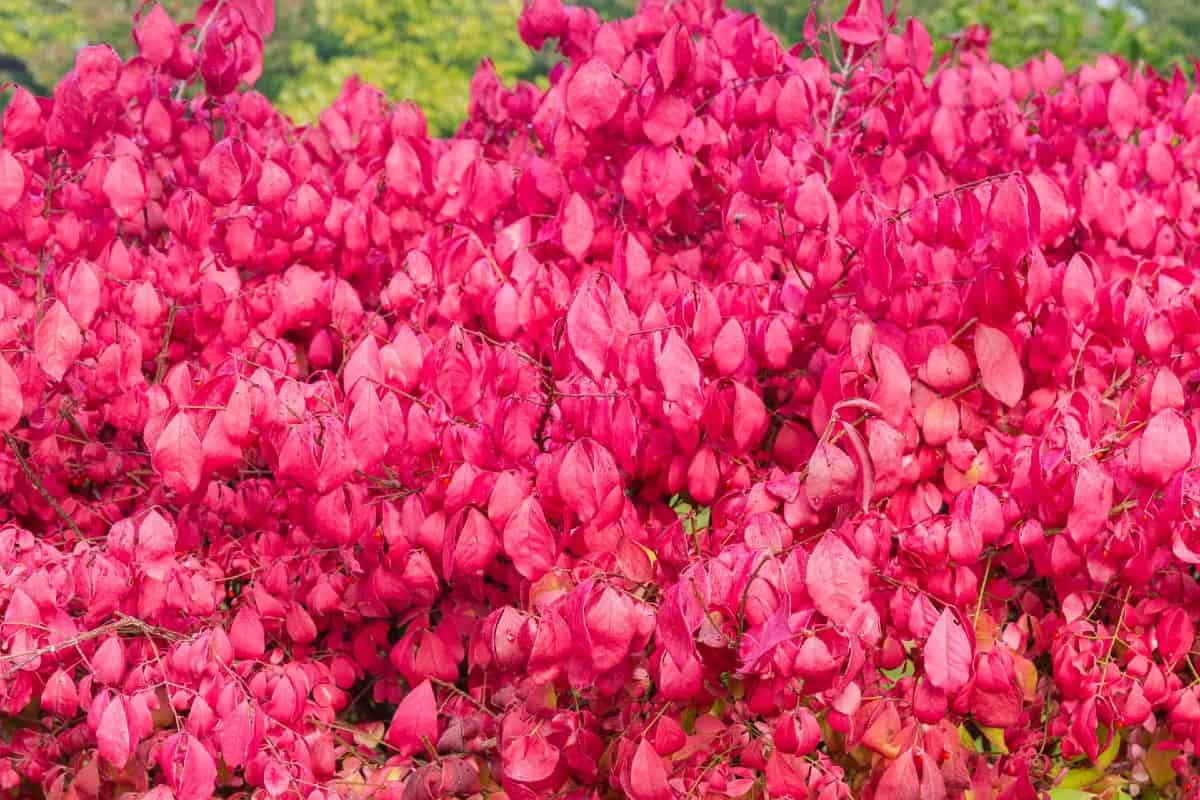
As the name suggests, the burning bush offers a stunning fall display of bright red and pink leaves. It is hardy to USDA zone four to eight and grows up to 20-feet-tall in nearly any environment.
The soil pH level, sunlight, and water requirements can all vary. No matter where you live, the burning bush spreads quickly and is one of the worst invasive garden plants.
The bigger the beautiful plant gets, the more the aesthetic value reduces, though. Unless you have time to continually prune and fight off euonymus scale attacks, avoid planting this shrub.
In some locations, this bush grows in dense thickets that drives out native herbs and woody plants. It drops hundreds of seeds per day.
The burning bush threatens multiple natural habitats, including coastal scrublands, forests, and prairies. The compact variety, Euonymus alatus compacta, is a non-invasive alternative.
Himalayan Blackberry (Rubus armeniacus) – Invades Nearby Growth
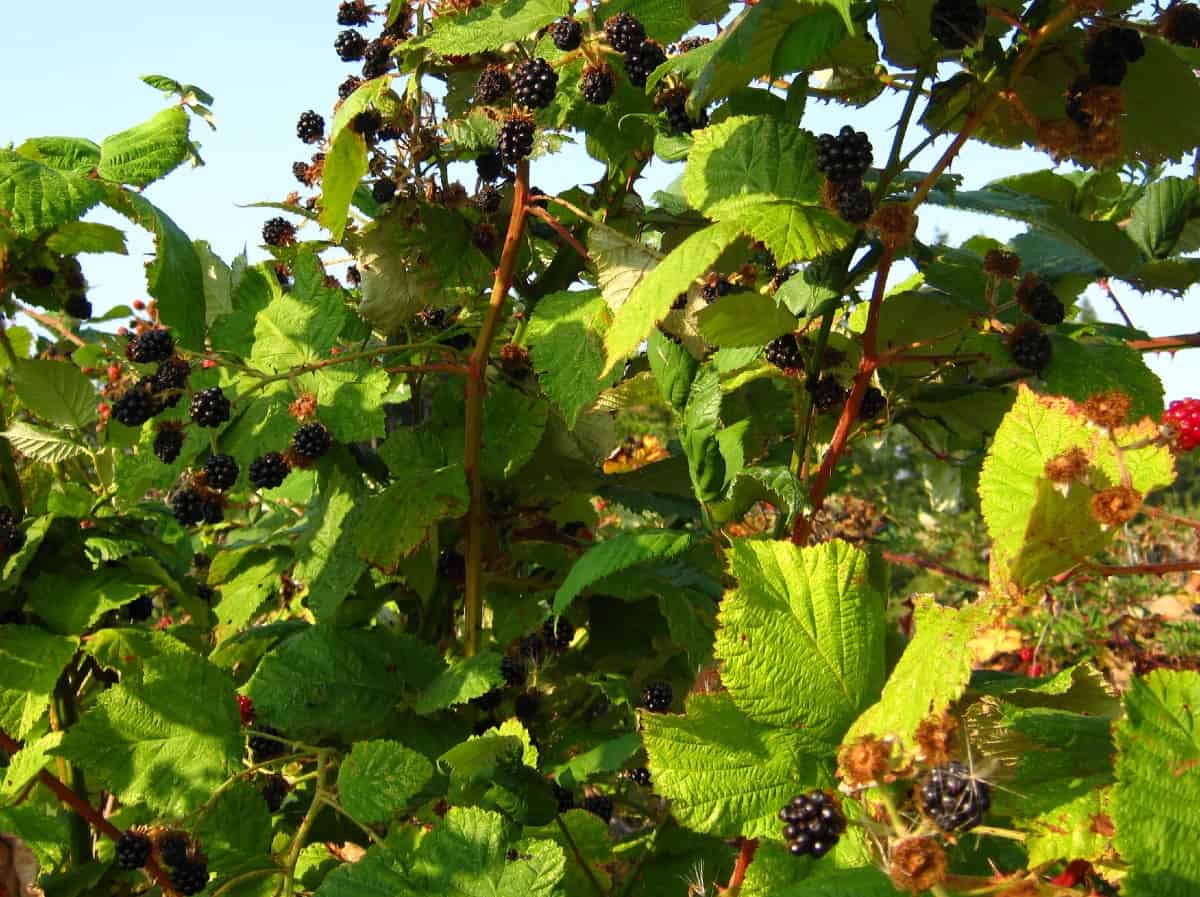
Also known as the Armenian blackberry, the Himalayan blackberry shrub is native to Armenia in the southwestern region of Europe. It grows in USDA planting zones four to nine, and whether you plant it in full shade or full sun, the canes reach anywhere from three to 40 feet long.
If you head to the Pacific Northwest, you’re sure to see blackberries everywhere and you can easily grow blackberries from seed. The plant is either a shrub or subshrub, depending on the size. The fruit grows in the long canes. However, be careful because the canes have thick, sharp thorns.
European Privet (Ligustrum vulgare)
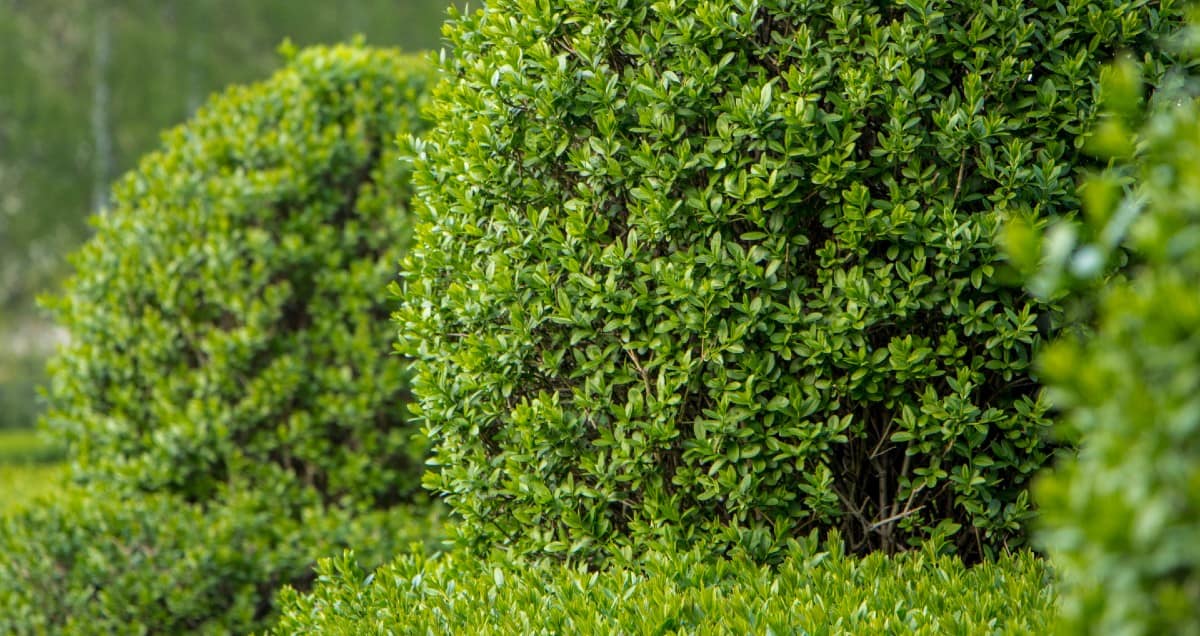
The European privet is also called the common privet or wild privet. It grows in USDA zones four to eight and as a semi-evergreen in the warmer climates. In part shade or full sun, the shrub reaches between four and 15-feet-tall.
Native to Africa and Asia, the plant became famous in Europe as well. Many people choose this plant to make a garden hedge. The issue with the European privet is that birds propagate the plant quickly. They eat the fruit and replant the seeds through their droppings.
Japanese Spiraea (Spiraea japonica) – Endangers Native Species
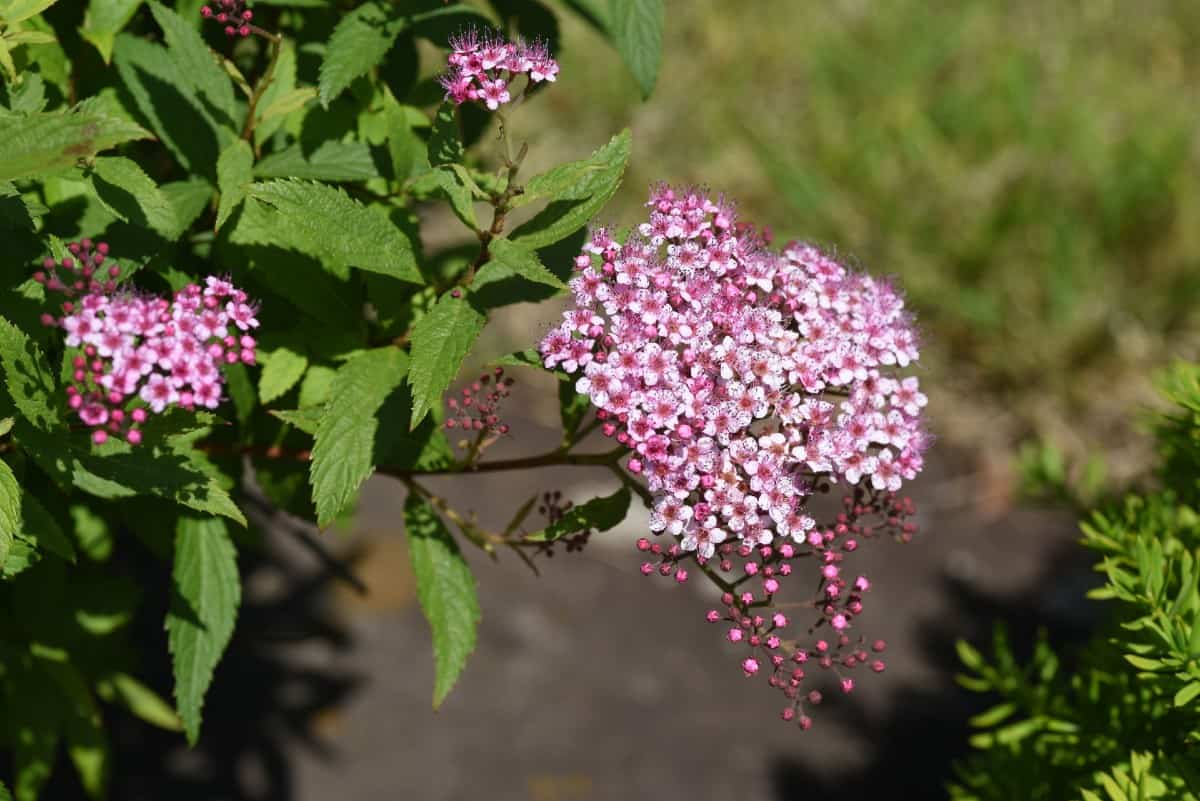
The Japanese Spiraea grows up to six feet tall in full sun areas, commonly known as the maybush or the Japanese meadowsweet. Although the shrub is native to Korea, China, and Japan, it snowballs in USDA zones four to eight.
As one of the small invasive landscaping bushes, Japanese spiraea immediately takes over the area and might endanger some native spiraeas in your environment.
This shrub is particularly tricky to control because it’s hard to eradicate entirely. The seeds may also lie dormant in the soil for multiple years.
Buckthorn (Rhamnus cathartica)
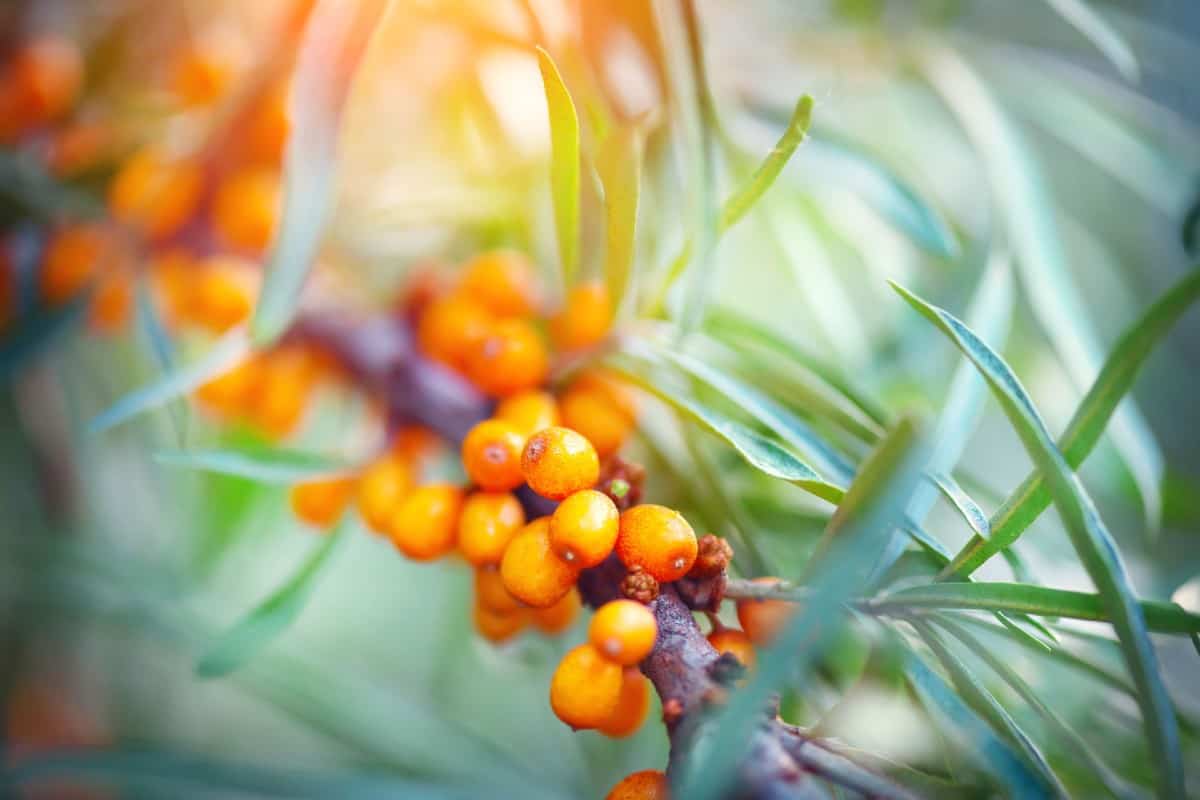
Common buckthorn is native to Asia and Europe. It was introduced to the United States in the mid-1800s as an ornamental shrub, but animals quickly spread the seeds from feasting on the fruit.
Fruit that falls from the mother plant also begins anew, creating a dense understory that other plants can’t compete with for sunlight.
Attempting to grow buckthorn only results in thick and dense brush. The plants overcrowd any native plants nearby, preventing them from reproducing. Buckthorn, in time, alters the entire ecosystem of the site.
Glossy Buckthorn (Frangula alnus) – Grows Understory Fast
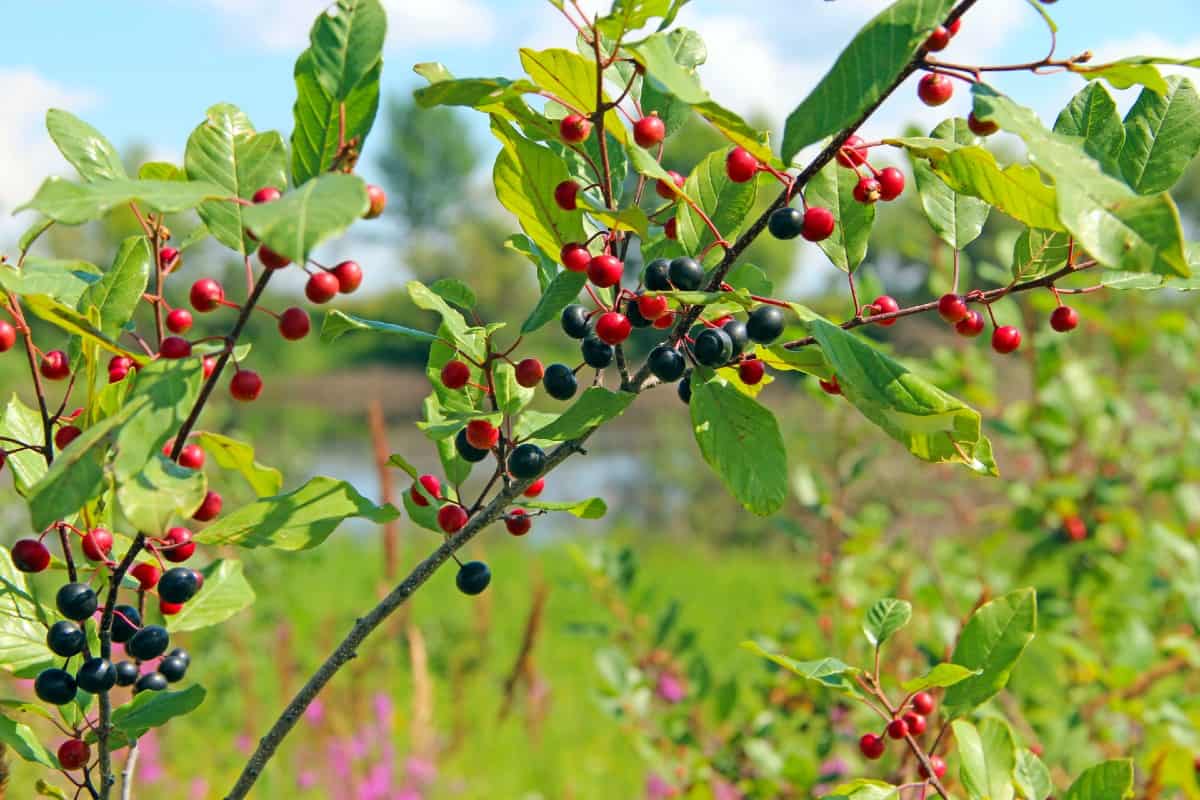
Another type of buckthorn, the glossy variety was also native to Asia and Europe before its introduction to North America in the 1800s. However, this type of buckthorn is a hedge plant.
People planted it to help wildlife habitats, but it quickly colonized most of the northeastern and northcentral portions of the United States. Glossy buckthorn also spreads quickly from the berries.
Both the birds who eat the berries and any nearby streams and rivers spread the seeds. Like common buckthorns, the understory of this shrub grows dense and eventually blocks out native vegetation.
Butterfly Bush (Buddleia davidii)
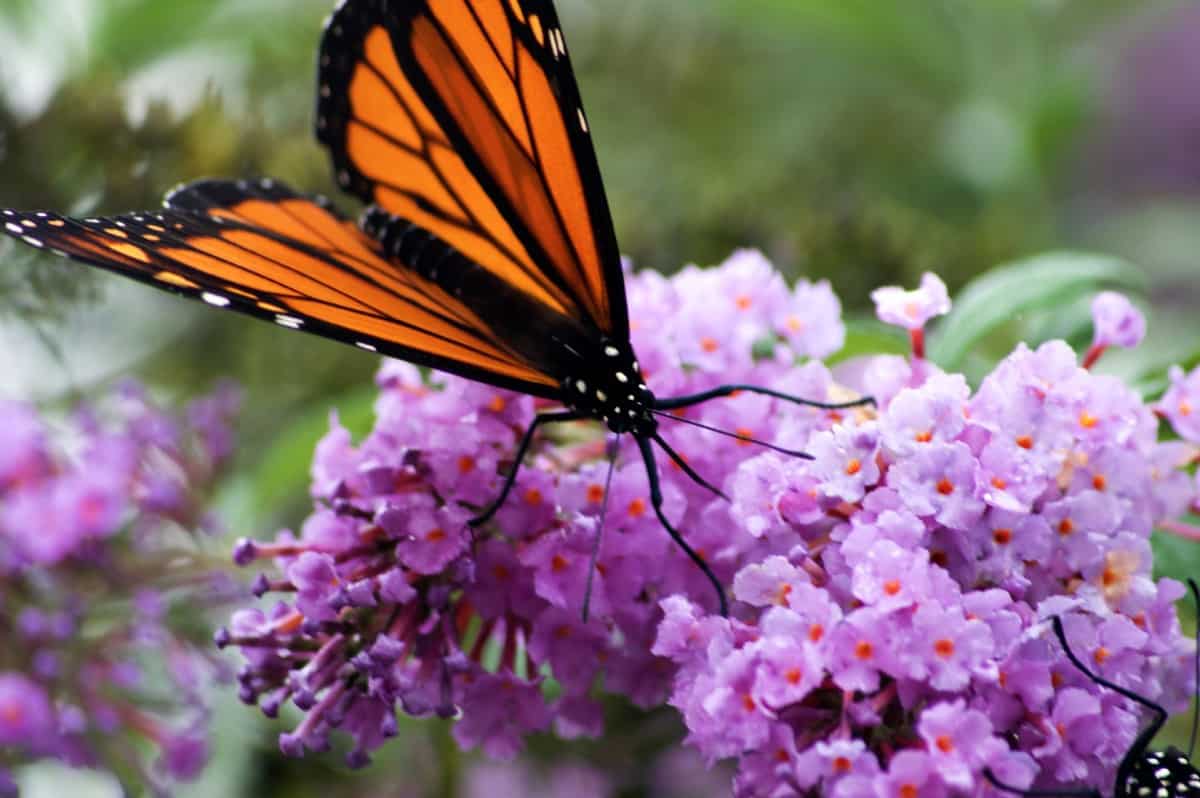
The butterfly bush offers gorgeous, fragrant blooms. Butterflies and other beneficial pollinators enjoy the lilac-like flowers. The low-maintenance shrub also grows up to 16-feet-tall with little to no care on your part.
However, These shrubs that grow fast don’t just attract butterflies. The shrub produces lots of seeds that negatively impact the nutrient composition of your soil and affect the other plants in your garden.
This affects the other plants in your garden. The butterfly bush may also compete with other native plants, so you’re better off sticking with another butterfly-friendly perennial.
Japanese Knotweed (Fallopia japonica) – Spreads Quickly
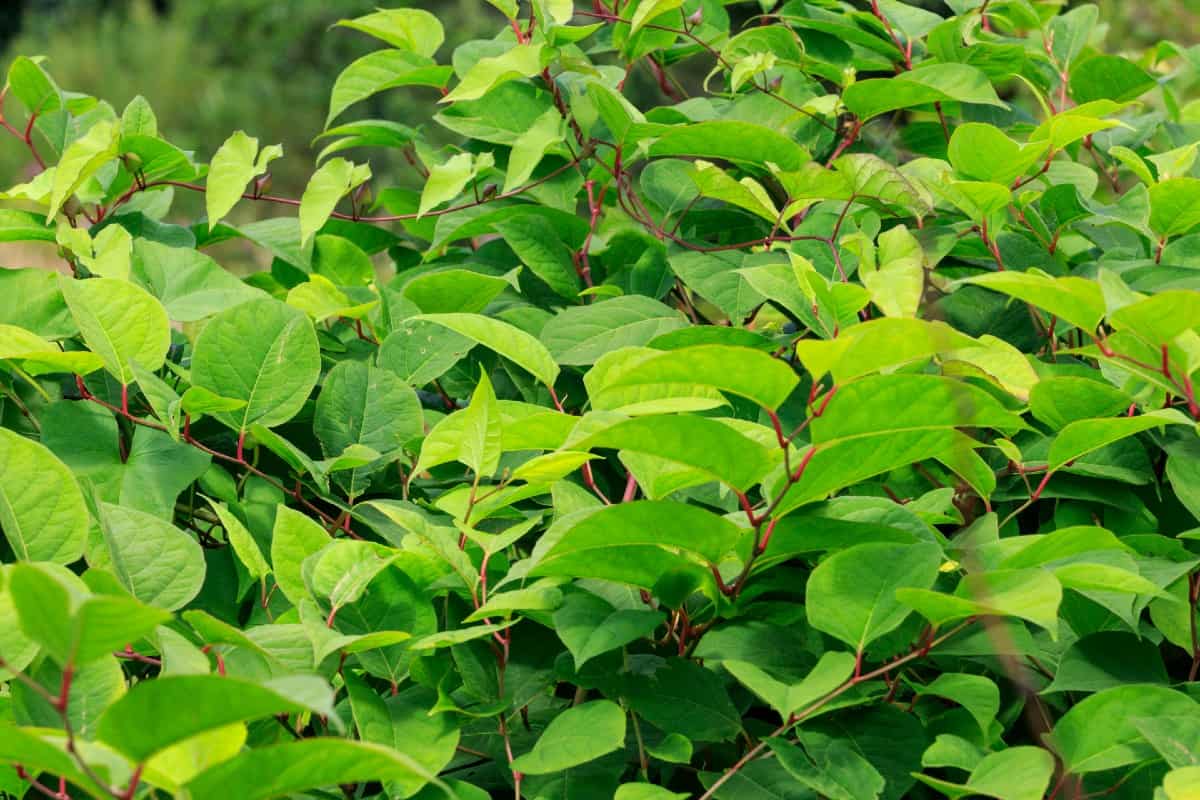
Japanese knotweed is native to Asia. Another member of the buckwheat family, the Japanese variety appeared in the United States in areas like New York as an ornamental shrub for landscaping in the late 1800s.
Today, the plant thrives in a wide range of landscapes. The Japanese knotweed spreads quickly in sunny areas. It grows bamboo-like stems in dense monocultures, which can reach anywhere from three to 15 feet high.
The tallest portions take over riverbanks, gardens, lawns, and roadsides. No matter what you try, getting rid of this plant is insanely difficult.
Before planting anything in your garden, always do your research. Search online to learn more about the species. Understand what the plant may attract or repel.
Learn how to prune and care for the shrub and know where to plant it. When in doubt, ask a garden professional at your local garden center for help.
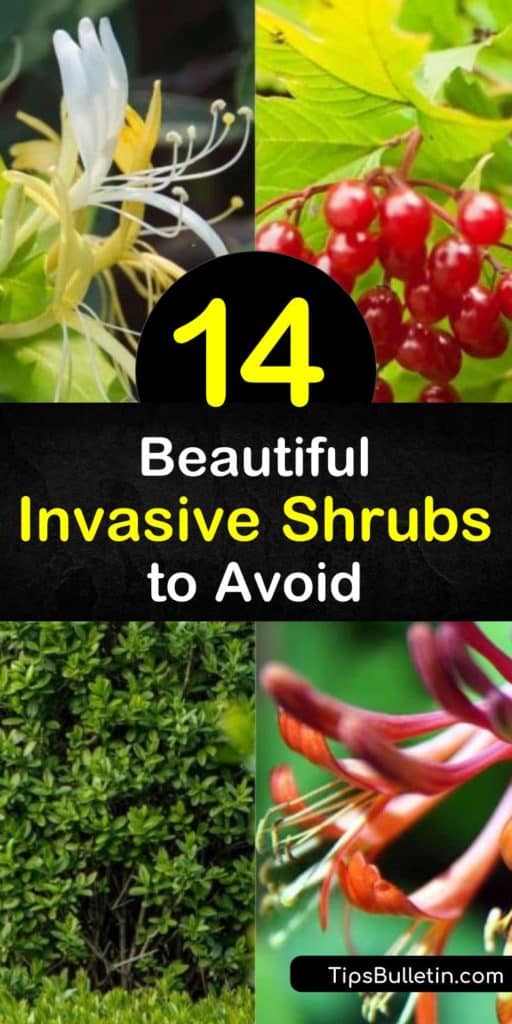
Which non-invasive shrubs will you plant instead? If you found our list of invasive shrubs to avoid planting helpful, please share these gardening tricks with your friends or family on Pinterest and Facebook.